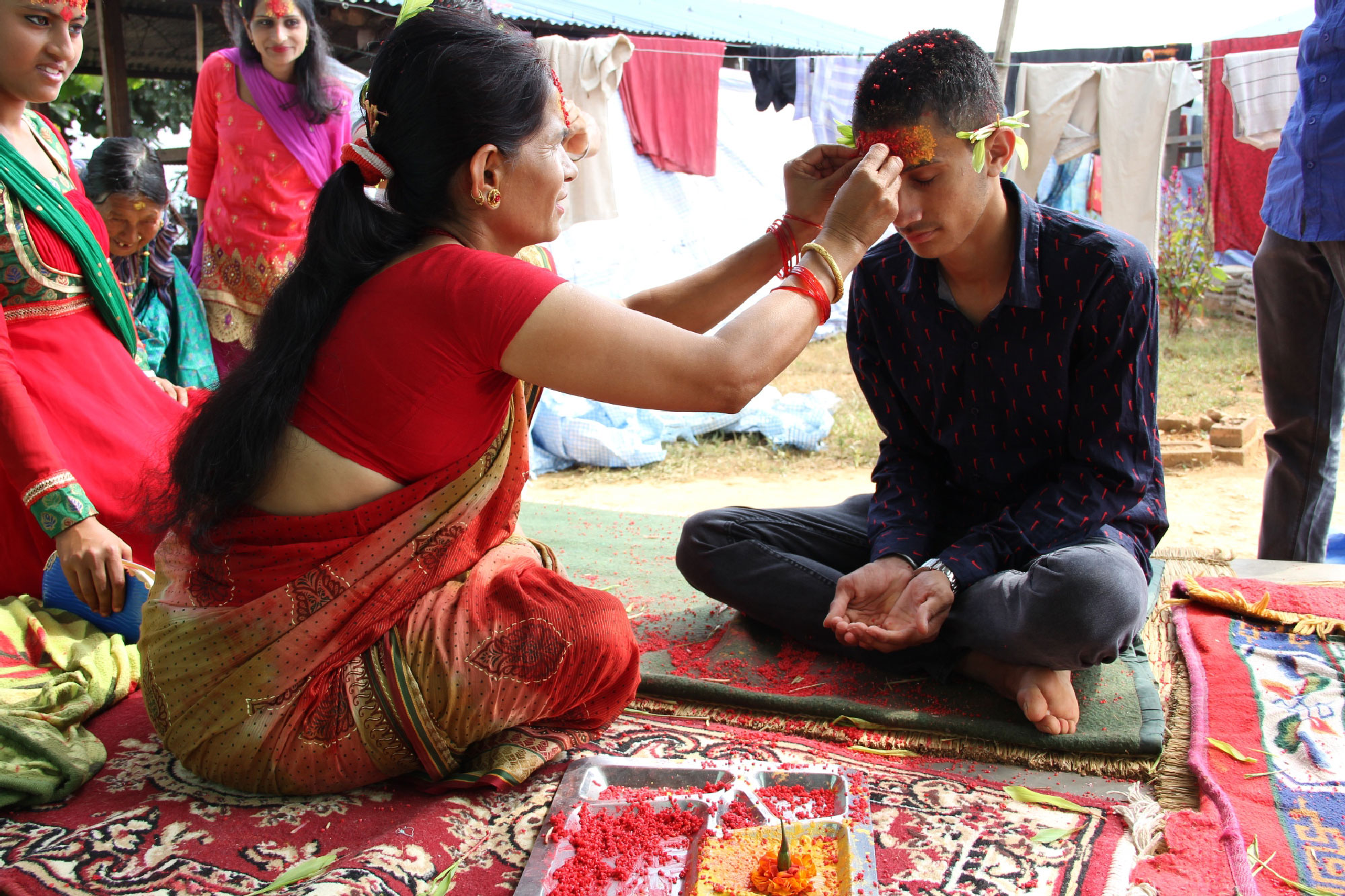Dashain, the longest and most auspicious festival on the Nepali calendar, came to an end early this week. It was largely a subdued affair, particularly for those who lost their houses in the earthquake six months ago. Chris Maxted recorded how people in Gorkha—one of the severely affected areas, where many now live in temporary shelters—celebrated the 15-day festival.
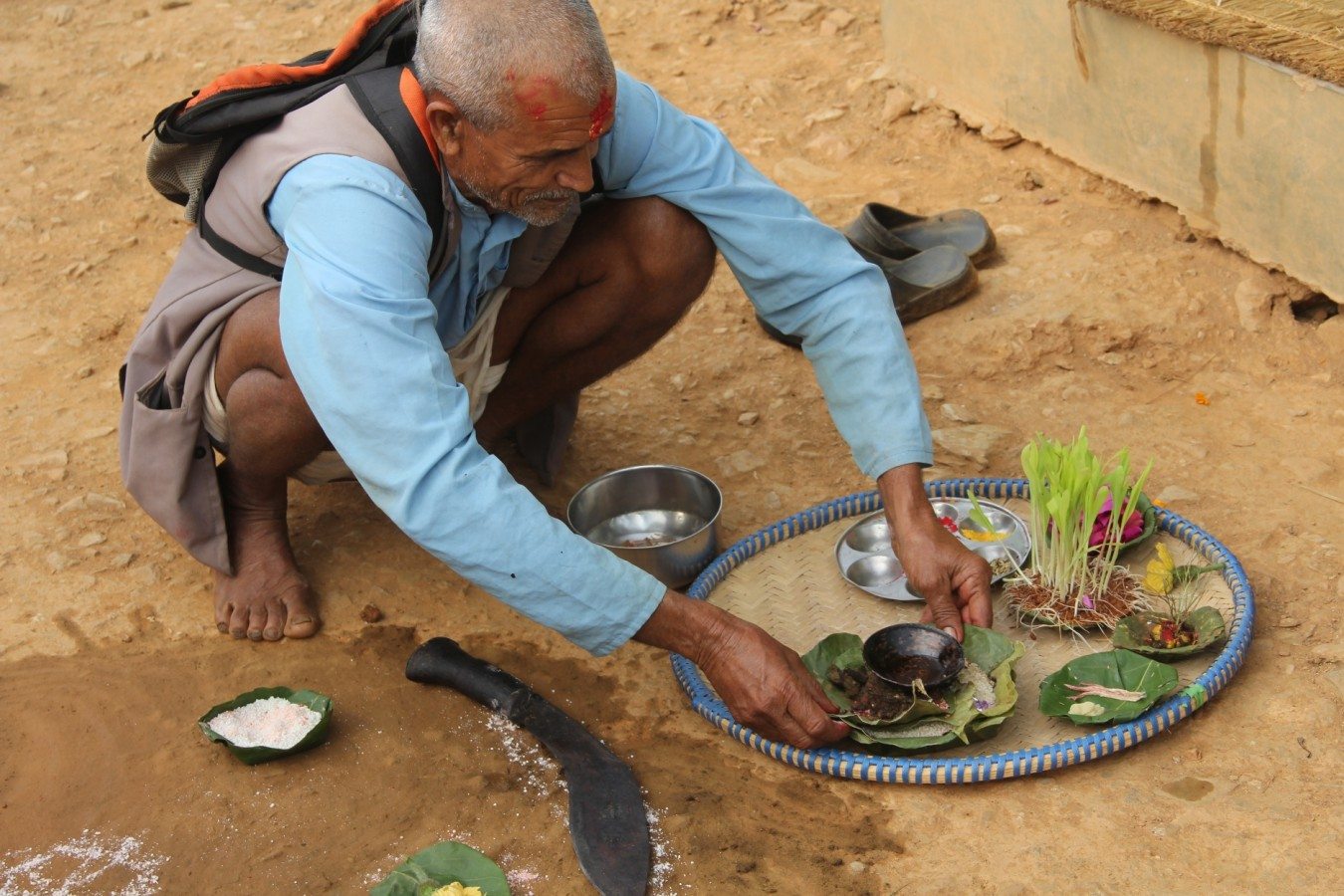
“This Dashain festival is a sad one for many,” said Kshitiz Paudel, Medical Director at the rural Amppipal Hospital, Gorkha. “But there are also a great number of people who feel they still have a reason to celebrate and give thanks.” This time of year sees families travelling, often great distances, to be with loved ones for the undisputed high point of the Nepali calendar. But with many village houses deemed unfit for habitation, the people living in makeshift shelters have marked the first Dashain since the earthquake as a time for reflection.
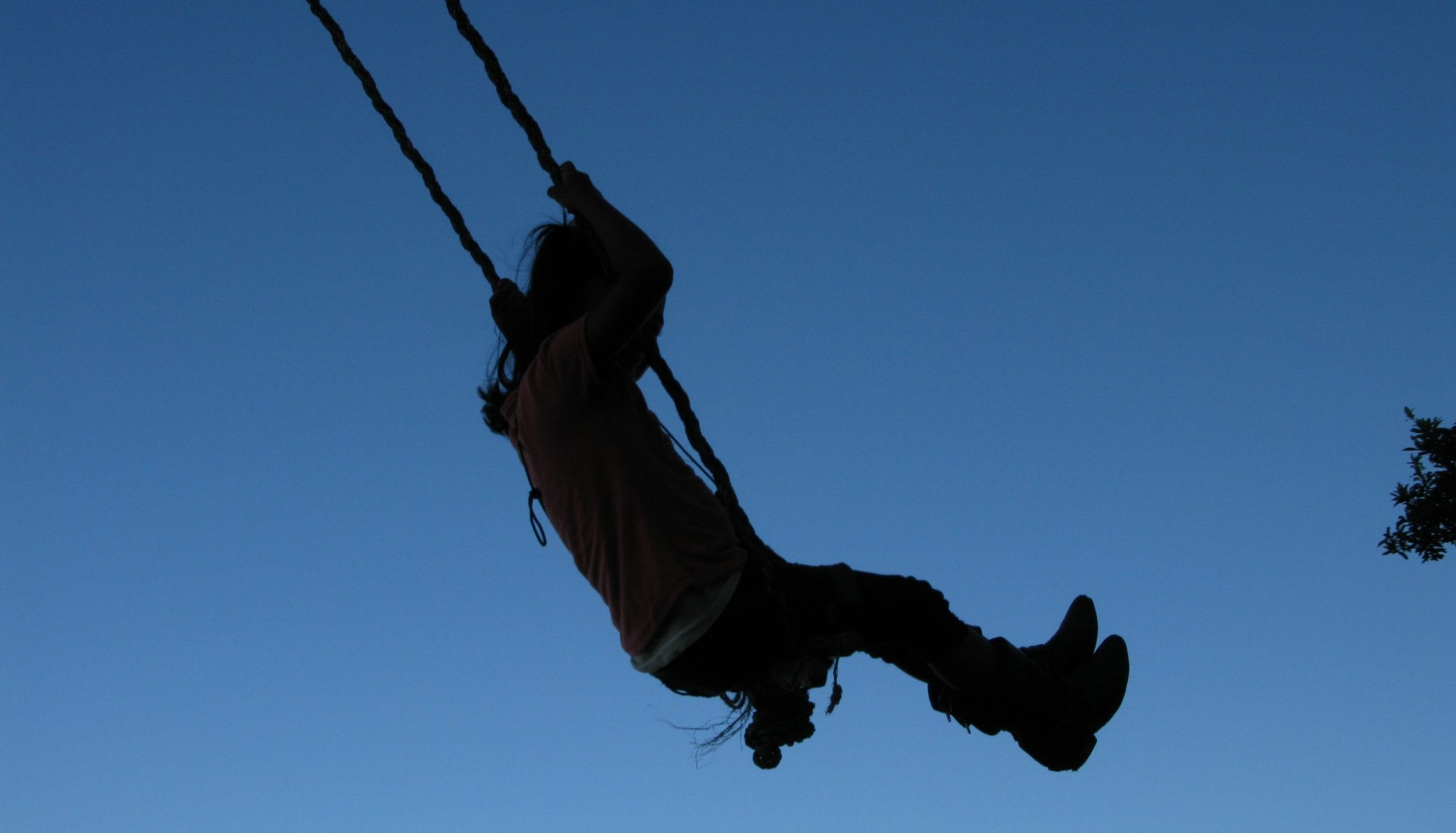
Little Saroj Bhujel, 8, of Malatagaira was watching cartoons on his bed when the earthquake struck, destroying his house. “Everything is ruined. We are all living in tents,” he said. ”It is not the same anymore and Dashain is not a celebration this year.”
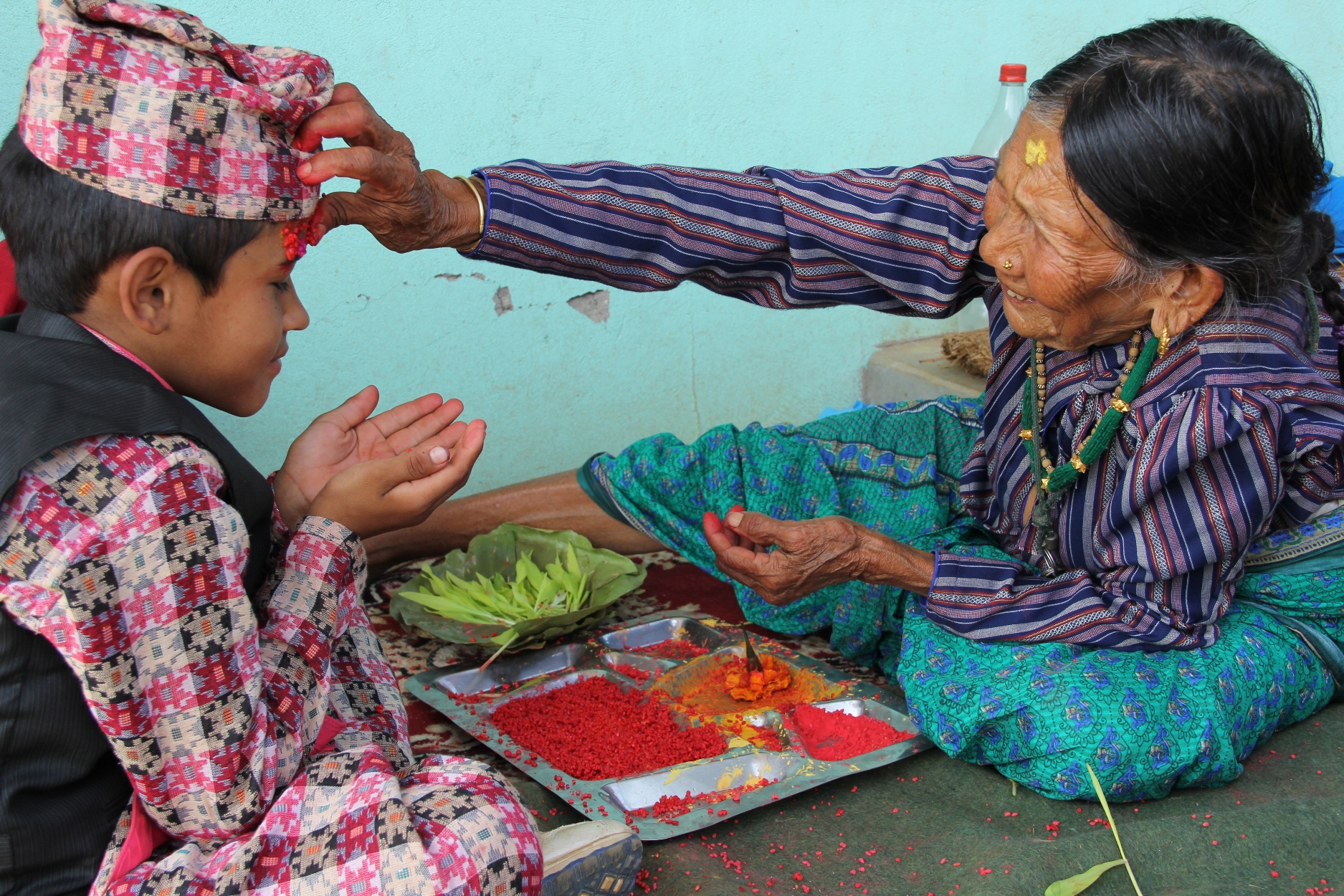
His mother, Bhagbati Thapa, as matriarch of the family, receives kinfolk from far and wide to bestow tika, a significant blessing of good fortune for the coming year. “This is an important tika for us,” added Krishna. “We have to hope for the future.” Their house may be irreparably damaged, but it was still put to good use by the thirty friends and relatives who congregated outside in its shade to eat, chat and play games. For this Dashain, as in previous years, the hills of Gorkha resound with drumming, singing and laughter well into the early hours.
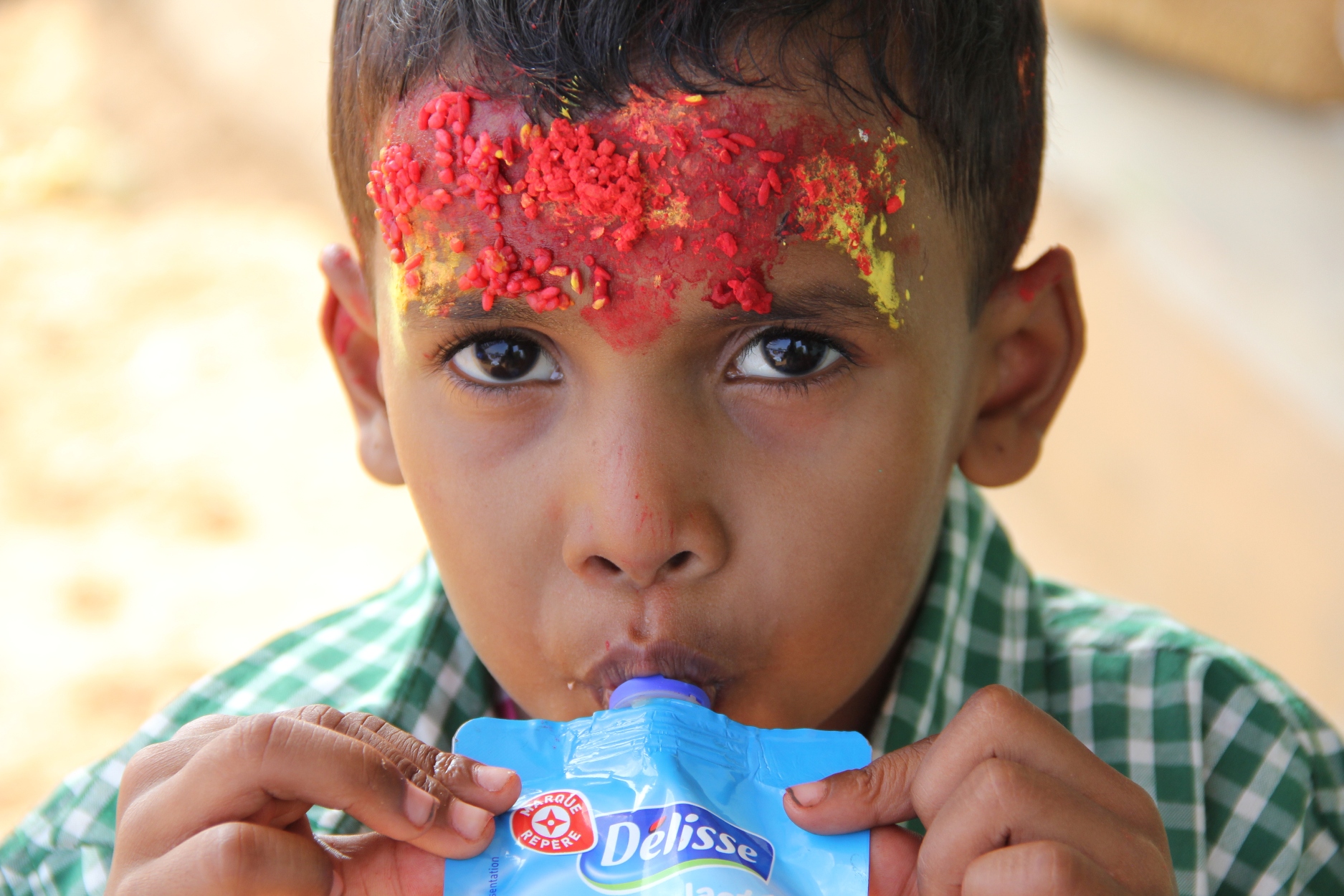
After healing the initial fractures, cuts and bruises caused by the earthquake, at Amppipal Hospital they have seen a lot of post-traumatic stress cases among the farming communities in that part of Gorkha. “They just need someone to talk to. I have counselled some very anxious farmers who are unsure about what the coming season will bring,” said Paudel. “But the Nepali people are resilient. They will work together to find a way.”
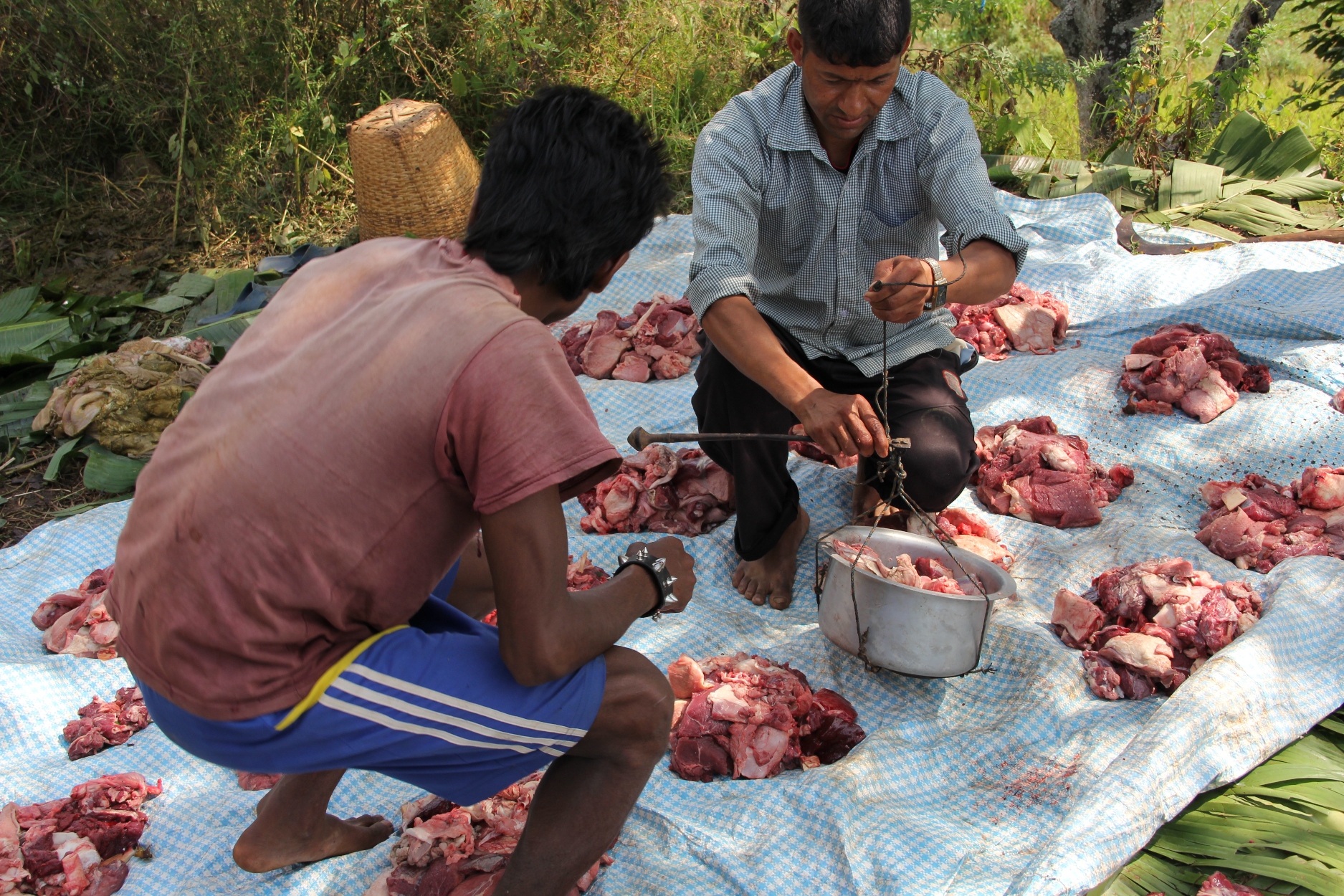
Villagers apportioning buffalo meat. During Dashain, outside every Hindu house, the ground is first sanctified and then either a buffalo or a goat is sacrificed. Eventually, the meat is used for the preparation of a big feast.
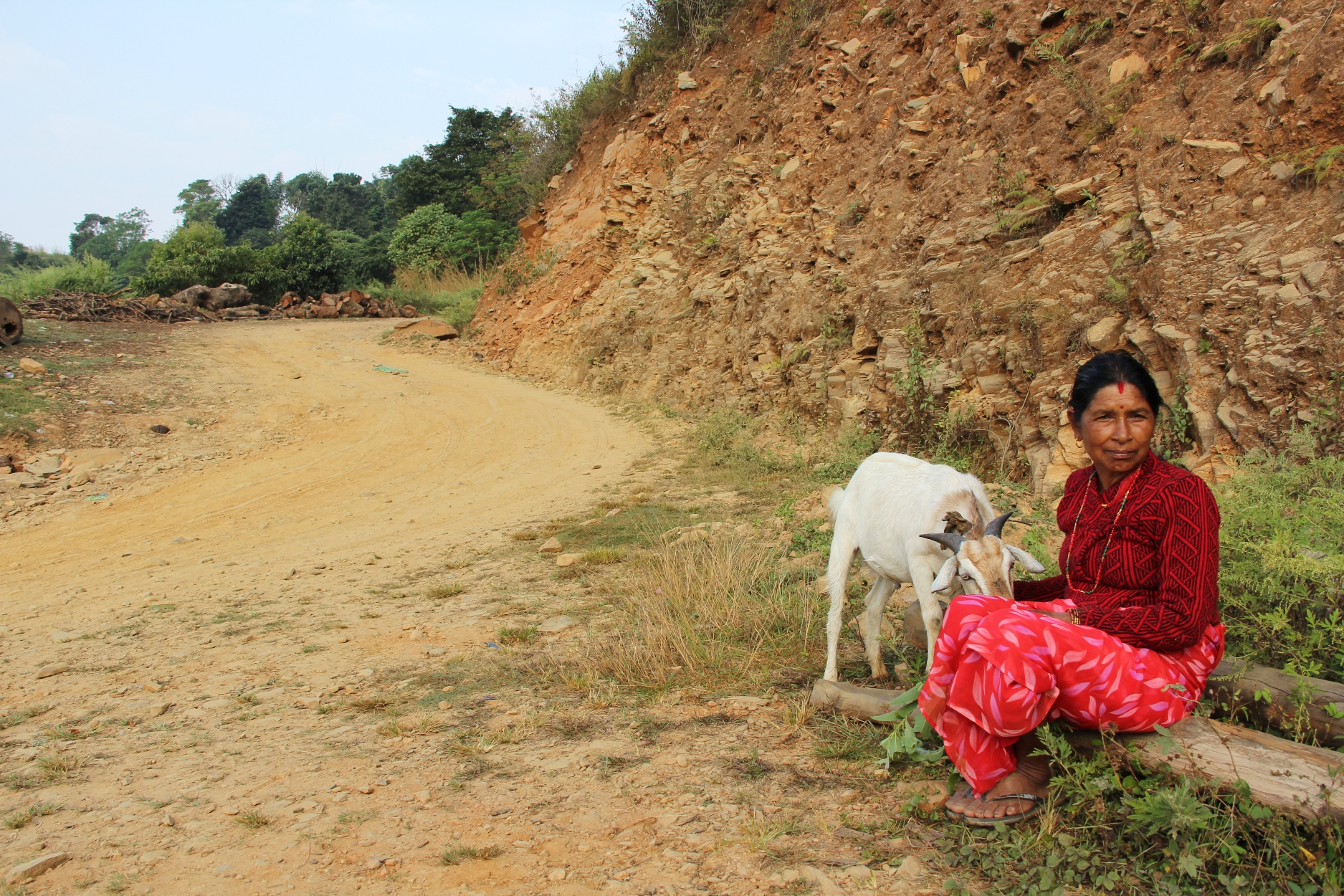
Devi Pokharel of Phalam Khani waits by the side of the road with her goat, for a crowded bus to take them the dusty 150km to Kathmandu. Normally her whole family returns to her village for the festival. “Now my house is gone, and I have to get to the city because no-one will come here,” she added. “It is far, and very tiring for me. The fuel problem means it is expensive to travel now and there is very little room on the bus. Without cooking gas in the city I have to pay someone else 2000 rupees (US$20) to butcher and prepare the goat for the feast. If others would have come here, we could have done everything ourselves.”
Chris Maxted is a former schoolteacher from the UK, now a private tutor in Hong Kong. A regular visitor to Nepal, he was in the Gorkha district as a volunteer for the Gorkha Foundation.


